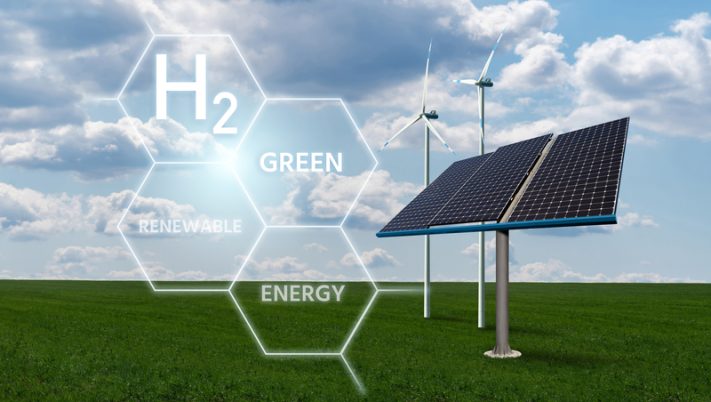On Monday, the European Commission proposed detailed rules to define what hydrogen from renewable sources means in the EU by adopting two delegated acts required under the Directive on energy from renewable sources, according to a statement from the Community Executive.
These acts are part of a broad EU regulatory framework targeting hydrogen, which includes energy infrastructure investment and state aid rules, as well as legislative targets for hydrogen from renewable sources for the industrial and transport sectors. They will ensure that all fuels from renewable sources of non-biological origin – also known as RFNBOs (renewable fuels of non-biological origin) – are produced from electricity from renewable sources, according to Agerpres.
The two acts are interconnected and both are necessary so that fuels are taken into account in order to achieve the objectives of the member states in the field of energy from renewable sources. They will provide investors with regulatory certainty as the EU aims to produce 10 million tonnes of renewable hydrogen domestically and import 10 million tonnes of renewable hydrogen under the REPowerEU plan.
The first delegated act defines the conditions under which hydrogen, hydrogen-based fuels or other energy carriers can be considered as RFNBO. The act clarifies the principle of “additionality” for hydrogen, provided for in the EU Directive on energy from renewable sources. The electrolysers that are used to produce hydrogen will have to be connected to new electricity production from renewable sources. This principle aims to ensure that the production of hydrogen from renewable sources stimulates an increase in the volume of renewable energy available in the network compared to what already exists. In this way, hydrogen production will support decarbonization and complement electrification efforts, avoiding, at the same time, pressure on electricity generation.
While the initial electricity demand for hydrogen production will be negligible, it will increase towards 2030 with the widespread introduction of large capacity electrolysers. The Commission estimates that approximately 500 TWh of energy from renewable sources is needed to achieve the ambitious 2030 target set in REPowerEU to produce 10 million tonnes of NBR. This ambitious target of producing 10Mt in 2030 corresponds to a proportion of 14% of the total EU electricity consumption. This ambition is reflected in the Commission’s proposal to increase the 2030 target for energy from renewable sources to 45%.
The delegated act establishes various ways in which producers can demonstrate that the electricity from renewable sources used for the production of hydrogen complies with the rules regarding additionality. In addition, it introduces criteria to ensure that hydrogen from renewable sources is only produced when and where sufficient renewable energy is available (known as temporal and geographical correlation).
To take into account existing investment commitments and allow the sector to adapt to the new framework, the rules will be phased in and designed to become more stringent over time. More specifically, the rules provide for a transition phase of “additionality” requirements for hydrogen projects that will start running before January 1, 2028. This transition period corresponds to the time when electrolysers will be widely available and enter the market. In addition, hydrogen producers will be able to match their hydrogen production with their contracted renewable energy on a monthly basis until 1 January 2030. However, Member States will have the option to introduce stricter rules regarding the temporal correlation starting from July 1, 2027.
The requirements for the production of hydrogen from renewable sources will apply to both domestic producers and producers from third countries who wish to export hydrogen from renewable sources to the EU in order to be counted towards reaching the EU’s renewable energy targets. A certification system based on voluntary systems will ensure that producers, whether from the EU or from third countries, will be able to demonstrate their compliance with the EU framework in a simple and easy way and will be able to trade hydrogen from renewable sources within the single market .
